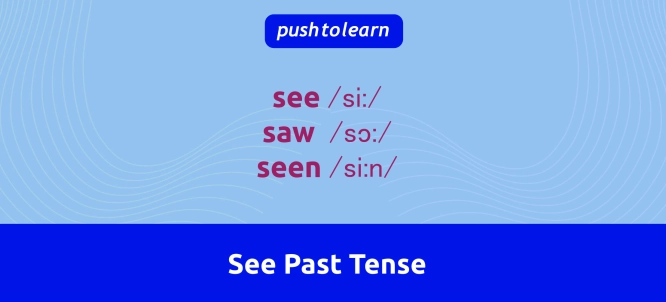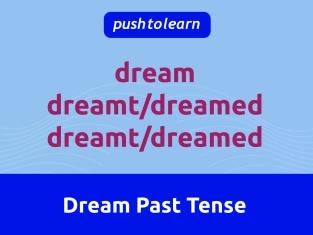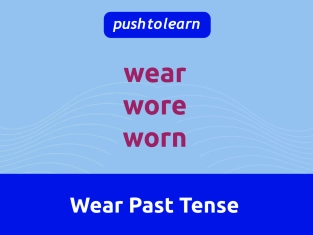by PushtoLearn
See Past Tense
Table of Contents
See Past Forms - Exercises
These exercises test different forms of the verb SEE and IRREGULAR VERBS
Meaning
The verb “see” means to notice or examine someone or something, using your eyes.
|
Tense |
Form |
Example |
|
Present |
see |
"I see a bird outside." |
|
Past |
saw |
"I saw a bird yesterday." |
|
Past Participle |
seen |
"I have seen that movie before." |

How to Use "Saw" (Past Tense of See)
"Saw" is used to describe an action involving seeing that happened in the past. It’s a simple past form, so it does not require auxiliary verbs like "did" or "have."
-
Examples:
-
"She saw her friend at the park."
-
"We saw a rainbow after the rain."
-
"He saw the results and was surprised."
Common Mistakes with "See," "Saw," and "Seen"
Many English learners mix up "saw" (past tense) and "seen" (past participle). Here’s how to use them correctly:
-
See: Present tense
Example: "I see a cat in the yard." -
Saw: Past tense
Example: "I saw a cat in the yard yesterday." -
Seen: Past participle (used with have/has/had)
Example: "I have seen that cat before."
|
Verb Form |
Usage |
Example |
|
See |
Present tense |
"I see the stars tonight." |
|
Saw |
Simple past |
"They saw the fireworks yesterday." |
|
Seen |
Past participle with have/has/had |
"She has seen that play before." |
Examples in Sentences
-
Describing Past Events:
-
"We saw an amazing sunset on vacation."
-
"He saw his teacher at the grocery store."
-
"They saw a shooting star last night."
FAQ
What is the past tense of "see"?
The past tense of "see" is "saw."
What’s the difference between "saw" and "seen"?
"Saw" is the simple past tense, while "seen" is the past participle used with "have/has/had."
Is "seed" a word?
No, "seed" is incorrect as a past tense form of "see." Use "saw" instead.
How do I use "seen" correctly?
"Seen" is used with "have/has/had" (e.g., "I have seen that show before").
Can I say "I have saw"?
No, the correct form is "I have seen."

